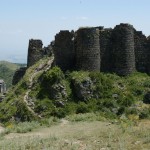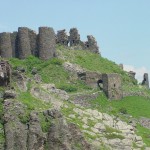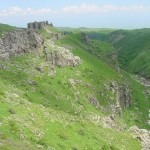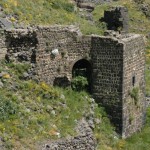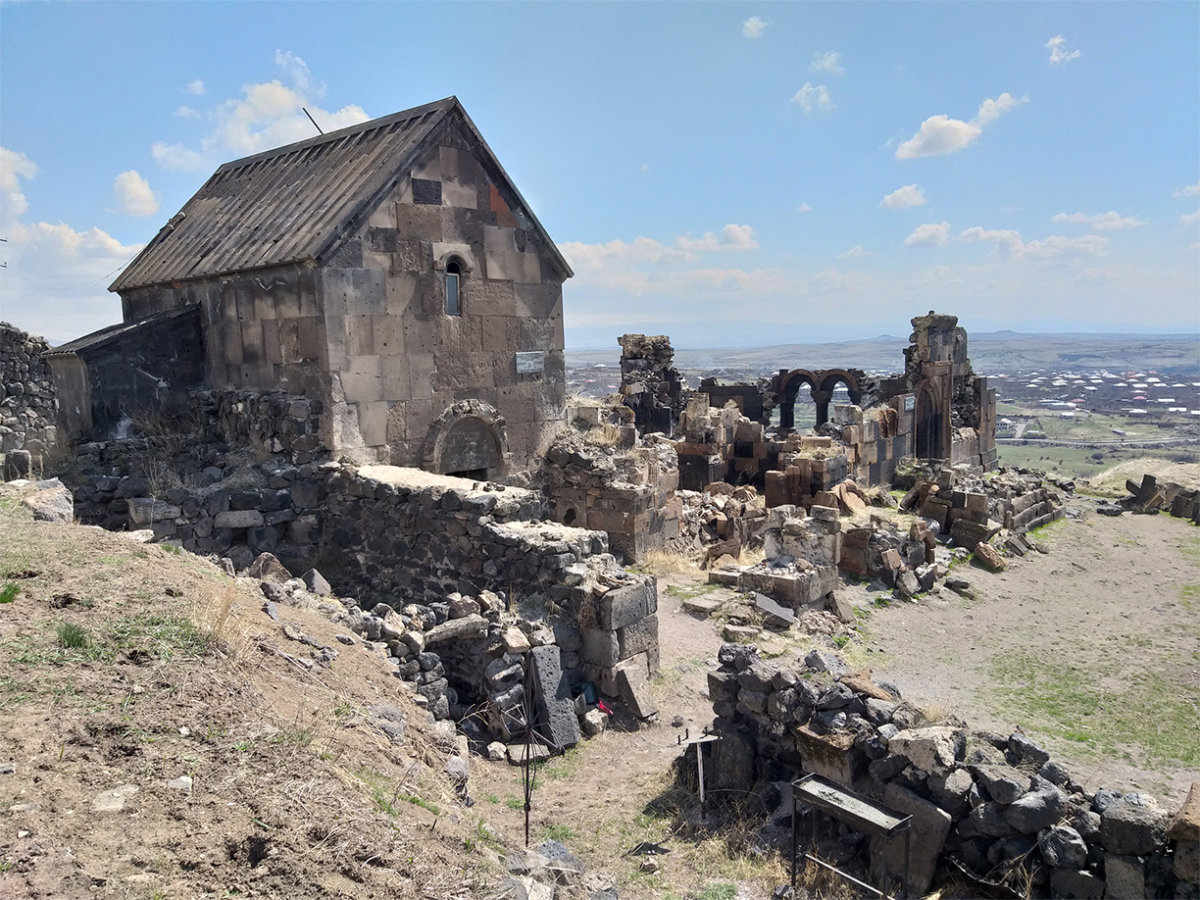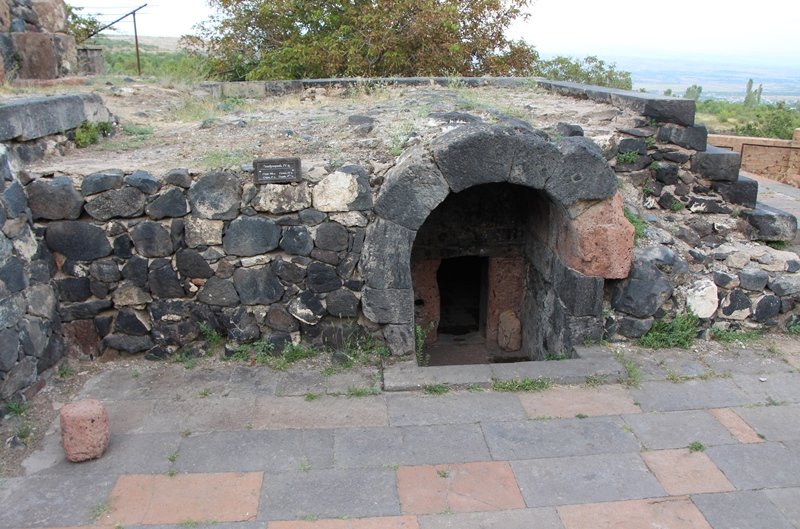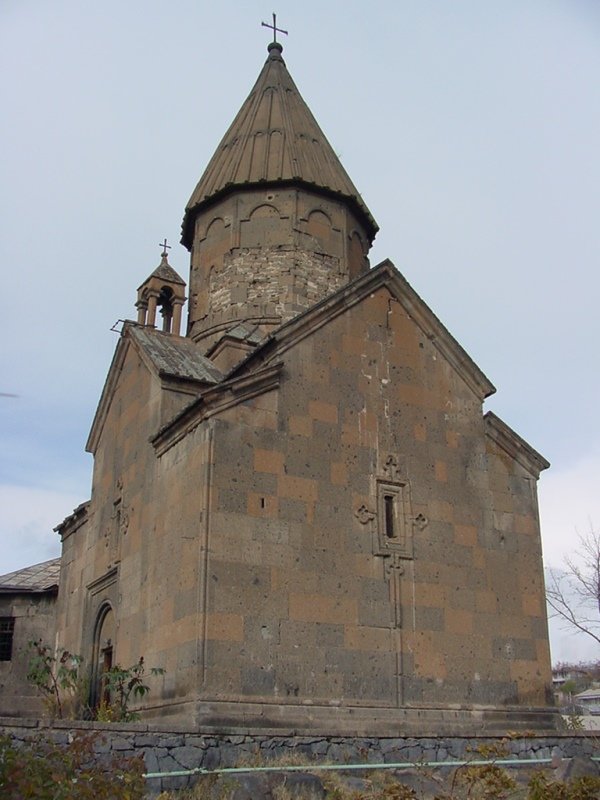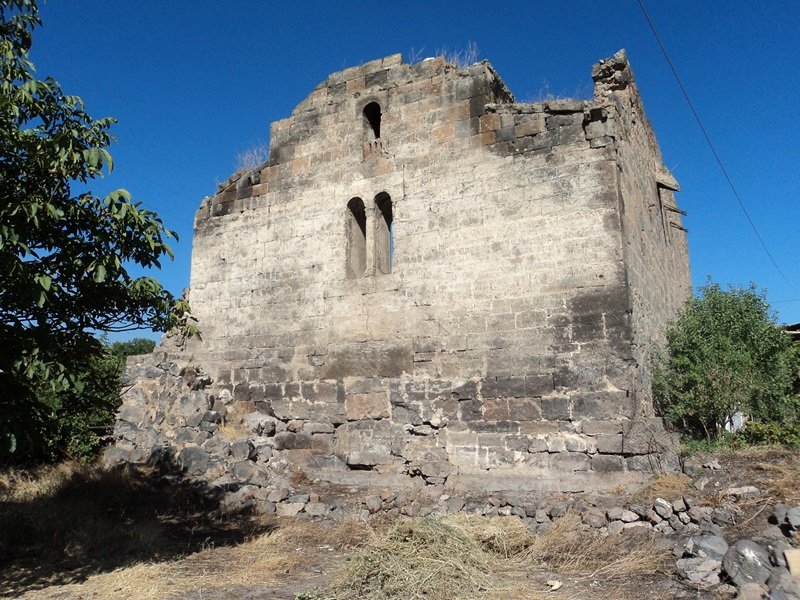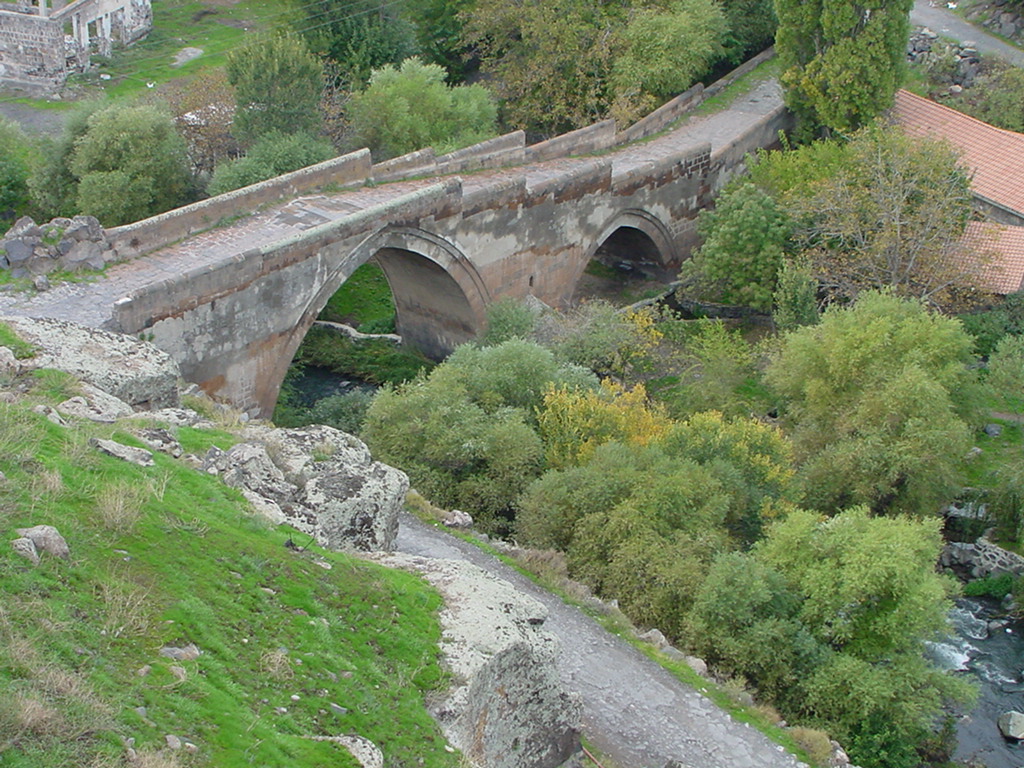AMBERD
v. Byurakan,
state index N 2.28.5
Amberd (Anberd) town-stronghold was erected in the historical Province of Aragatsotn, presently 7 km north-west from Byurakan village of Ashtarak Region of Aragatsotn Province of RA. It is located on the southern slope of Mount Aragats, at the junction point of the Arkashen and Amberd Rivers, on a triangular cape. The exact date of Amberd’s foundation is unknown. Some scholars relate its foundation to the Cyclopean period and the others — to the Uratian and early medieval periods. According to the results of the excavations and historical-archeological researches, the stronghold of Amberd is dated at the X‒XIII cc.
Judging by historical sources, the construction of Amberd was started by the Kamsarakan Princes, in the VII c. In the X c. the stronghold belonged to the Pahlavuni Princes and was one of the important military-defensive strong points. Thanks to its natural position and defensive structures, it had a reputation of an impregnable stronghold. One of the responsible roles of Ani City’s defensive ring was given to it.
In the X‒XIII cc. the town-stronghold involved a series of historical-architectural monuments: stronghold walls, the gates of the Arkashen and Amberdadzor Gorges, a castle, water reservoirs, a bath-house, secret passages, a chapel, dwelling buildings, the Cathoghike Church. At present only the ruins of the town‒stronghold (X‒XIII cc.) and the walls have survived, as well as the remnants of the bath-house (X‒XI cc.) and various constructions, also the Cathoghike Church (Vahramashen) (1026).
Castle — it was concluded from the results of the researches of the ruins of the basalt-built complex, located in the high-positioned place of the town-stronghold, that it had three storeys, in some places four storeys with inter-storey overhead covers made of logs, and was repeatedly reconstructed and reinforced.
Bath-house — is situated at the castle and at the gate of the Arkashen. It was erected from smoothly hewn stones and had an underground system of heating. This remarkable monument has a rectangular plan with a cloak-room, located successively along the longitudinal axis, a swimming–hall and a heating system. Traces of frescos are noticeable on the wall of one of the rooms.
Chapel — is located at a distance of about 9 km from the bath-house. It is supposed that the chapel was erected no sooner than the X c.
The Cathoghike (Vahramashen) — the Church of Vahramashen, constructed in 1026, under Vahram Pahlavuni’s patronage, is situated at the wall of Arkashen, in the high-positioned central place of the town-stronghold. The church has a domed, cruciform structure. The praying-hall, with the main apse of the eastern side and the vestries of the 4 corners, is included in the rectangular plan. Inwardly it is round, outwardly the 12 faceted drum is adorned with a pair of pilasters and is covered with an umbrella-shaped calotte. The latter is noteworthy and it is the first example of such an overhead cover. Inside of the church, on the wall, is the construction inscription. The exterior architecture of the church is plain and unornamented.
A series of archeological excavations, reinforcement and repair works of the monuments were realized in Amberd, during the past decades.
The first excavations of Amberd town-stronghold were carried out by Academician H. Orbeli, in 1936. Afterwards the excavations were continued in 1963-72, by the Institute of Archeology and Ethnography of the Academy of Sciences of the SSRA, under the supervision of N. Tokarski and S.Harutyunyan. During the excavations metal objects, weapons, silver jewelry, pottery, glass-work, golden and copper coins, candle-sticks, bronze candelabra and other archeological objects were discovered.
The repair and reinforcement works of Vahramashen Church and the bath-house were fulfilled according to the repair project of architect Yu. Tamanyan, on the basis of the measurements done by architects K. Ghafadaryan, A.Zhamharyan, V. Harutyunyan, S. Kyurkchyan, A. Mirijanyan, in 1949‒72.
Restoration and improvement works of the monuments in Amberd Complex were carried out also in 2005-2007.
The main literature on the monument:
Harutyunyan S., Anberd, Yerevan, 1978.
Shakhkyan G., Lori: the Stone-Sculptured Pages of History, Yerevan, 1986.
Tamanyan Yu., Restoration of the Stone Age, Yerevan, 1981.
Amberd, Milano, 1972.
The Prince’s Castle of Amberd (views)



